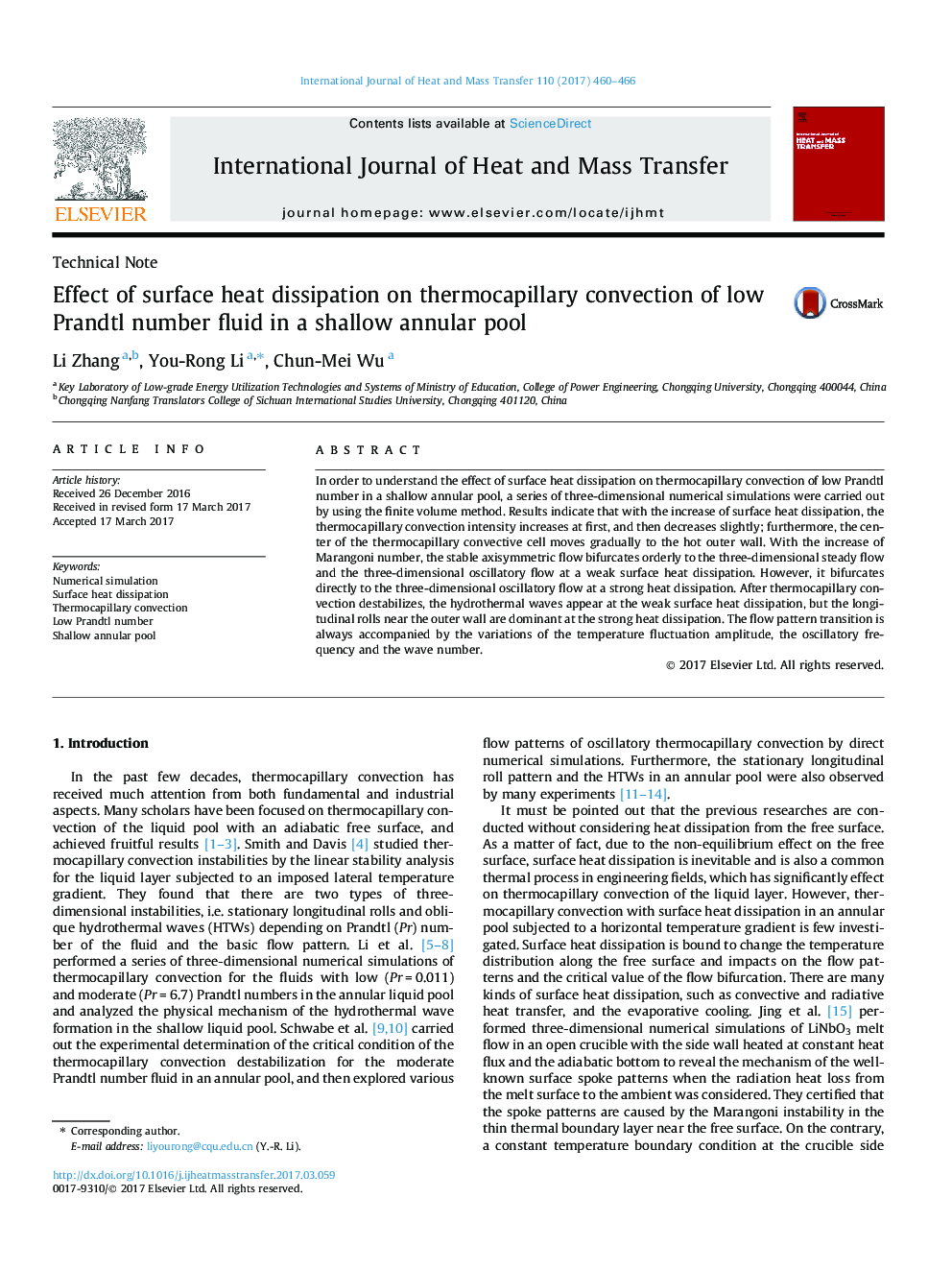| Article ID | Journal | Published Year | Pages | File Type |
|---|---|---|---|---|
| 4993627 | International Journal of Heat and Mass Transfer | 2017 | 7 Pages |
Abstract
In order to understand the effect of surface heat dissipation on thermocapillary convection of low Prandtl number in a shallow annular pool, a series of three-dimensional numerical simulations were carried out by using the finite volume method. Results indicate that with the increase of surface heat dissipation, the thermocapillary convection intensity increases at first, and then decreases slightly; furthermore, the center of the thermocapillary convective cell moves gradually to the hot outer wall. With the increase of Marangoni number, the stable axisymmetric flow bifurcates orderly to the three-dimensional steady flow and the three-dimensional oscillatory flow at a weak surface heat dissipation. However, it bifurcates directly to the three-dimensional oscillatory flow at a strong heat dissipation. After thermocapillary convection destabilizes, the hydrothermal waves appear at the weak surface heat dissipation, but the longitudinal rolls near the outer wall are dominant at the strong heat dissipation. The flow pattern transition is always accompanied by the variations of the temperature fluctuation amplitude, the oscillatory frequency and the wave number.
Related Topics
Physical Sciences and Engineering
Chemical Engineering
Fluid Flow and Transfer Processes
Authors
Li Zhang, You-Rong Li, Chun-Mei Wu,
